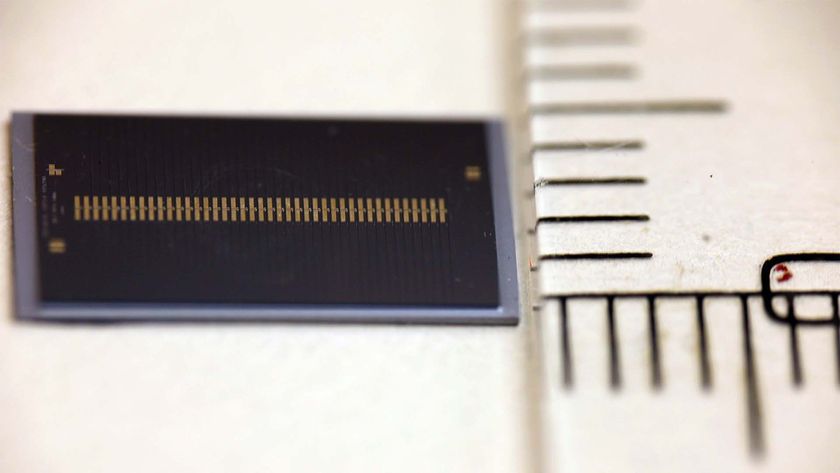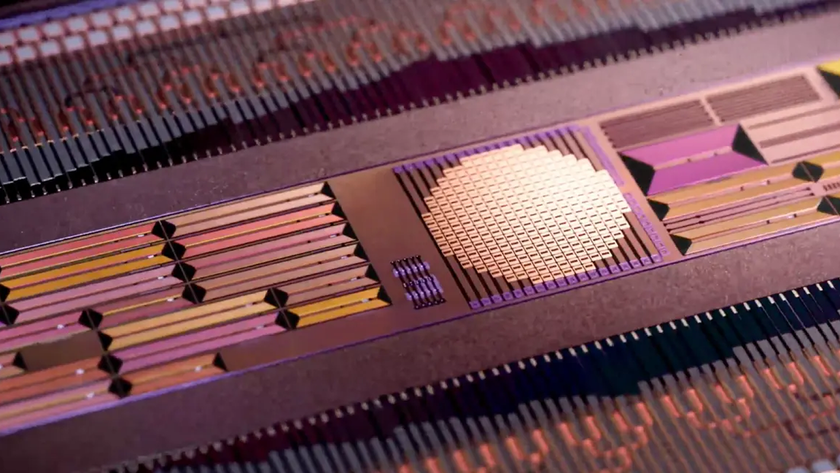How to Take Better Cell Phone Photographs

Anyone who has a cell phone – and that means pretty much everyone – is an amateur photographer these days. Even the cheapest cell phone models come with a built-in camera. But capturing a true Kodak moment via these cell phone accessories, with their small lenses and often grainy resolution, can be rather tricky.
Not that people aren't trying: In a sign of the times that cell phone cameras have indeed arrived, about five months ago the iPhone 3G dethroned several popular Canon EOS Digital Rebel and Nikon D models to become the most popular camera on Flickr.
Reflecting this trend, some high-end cell phone cameras have gotten powerfully good and come with increasingly more of the features found in dedicated, professional cameras. These items include higher speed shutters, better quality zooms, automatic smile detection and a range of lighting settings.
Still, most cell phone cameras can't stack up against decent point-and-shoot cameras in terms of resolution, lens quality, shutter speed and more.
To find out how to make the most of a cell phone camera, TechDailyNews turned to Shawn Rocco, a photojournalist the News & Observer newspaper in Raleigh, North Carolina. Rocco is author of a book of cell phone photographs and a blog called cellular obscura and he also teaches photojournalism at the University of North Carolina at Chapel Hill.
Though Rocco uses a high-end, $2500 Canon 5D Mark II and other professional cameras during his day job for the newspaper, he favors a dated Motorola for his personal cell phone photography. "You don't need thousands of dollars to do photography and do it well," Rocco said. "You can just use what you have in your pocket."
An edited transcript of the interview follows. [See Rocco's Cell Phone Photos]
Sign up for the Live Science daily newsletter now
Get the world’s most fascinating discoveries delivered straight to your inbox.
TechNewsDaily: For taking good cell phone pictures, what is square one?
Shawn Rocco: First off you really need to know your equipment. You need to know what it can and can't do and what limitations there are so you can work within them and around them. Personally, I enjoy using this Motorola because it has limitations. It forces me to be creative or look at things differently.
TechNewsDaily: What cell phone camera do you use exactly?
Shawn Rocco: It's an older type Motorola E815. I don't use it anymore to make phone calls. I've had the E815 since 2007 and I think when I got it was a discontinued model. [The E815 was first introduced in 2005]. I have a newer phone but the camera just doesn't have the same feeling.
TechNewsDaily: What is it that makes the camera in this Motorola phone so appealing?
Shawn Rocco: There's a few reasons. Each kind of camera gives you something different, so you're not getting the same response to a composition or a scene across the board. Basically when I was shooting with this little cell phone camera, there was something there that felt different and felt fresher than the pro stuff. There was a little more feeling, a little more atmosphere to it. There were imperfections with it that made it feel more real, and there's something to be said for that. Professional perfection can be bland and boring.
TechNewsDaily: How can you work with the limitations of cell phone cameras in relation to lighting and color?
Shawn Rocco: You have to be aware of light, how it's playing on certain features. Cell phone cameras have color options in case you're inside or outside, but I keep it real simple – I leave it on automatic. I usually shoot more black and white than color, especially in low-light situations because black and white is a lot more forgiving, but I will do color if the scene demands it. The color you get from some cell phones feels like old, out-of-date 1970s film, and that's kind of nice depending on what it is, but sometimes you kind of want color to be correct. Even with pro digital cameras the color isn't always captured correctly.
TechNewsDaily: Regular cameras often have flashes to compensate for low-light situations. What about the flashes on cell phone cameras, are they any good?
Shawn Rocco: Some cellphones have a little LED-kind of light. It doesn't pop like a flash, it's more just a steady stream of light, but that helps. Mine doesn't have a flash, so I always keep a little LED pocket flashlight with me as a keychain and I've used that a few times to light up subjects. Light is light!
TechNewsDaily: What are other important differences between some cell phone cameras and regular cameras?
Shawn Rocco: With this Motorola camera, you have an 8x10 aspect ratio, so it's compositionally much different than 35-mm film, which is a lot more horizontal. So that's a difference right there. There's a zoom on my cell phone camera that I avoid using because it just pixellates the picture, so it's basically kind of a fixed lens camera. Each cell phone reacts differently, so you've really got to know how yours works. I tell everyone who's a photographer that you have to shoot, shoot, shoot, and shoot some more.
TechNewsDaily: What about image quality and resolution?
Shawn Rocco: A lot of cellphones have settings for file size, which can be large or small, and also for picture quality, which might be fine, medium or low. I think if you want to do cell phone photography, you generally want it on highest resolution and best quality. At least with the phone I'm using, that's for sure!
TechNewsDaily: So how important are megapixels in terms of taking good cell phone pictures? And what impact can this have when trying to enlarge the pictures for printing and displaying?
Shawn Rocco: I think 10-12 megapixels is on the high end for cell phone cameras. That's more than my professional camera just a few years ago! [In comparison, Rocco's current Canon 5D Mark II has over 21 megapixels.] My cell phone camera is only 1.3 megapixels. This gives me a file about 3.75 megabytes in size. With that I've actually been able to blow photos up to 24x30 inch prints at 200 BPI [bits per inch]. I've done that through interpolation in Photoshop. For a number of photos the results look great, they're not very pixellated. Basically, each person needs to know their phone. Your cell might have 10 megapixels, which means you can shoot on medium quality and still get a damn good photo.
TechNewsDaily: What are your thoughts on the iPhone?
Shawn Rocco: The iPhone is three megapixels [though rumors abound that Apple will unveil a 5-megapixel version in 2010]. The iPhones are awesome. I don't have one personally, but I'm looking forward to getting one soon. As an aside, the plane that went down in the Hudson River this time last year, the photo that graced many front pages of newspapers was taken with an iPhone.
TechNewsDaily: Given that cell phone cameras are small and light-weight compared to heavy-duty professional cameras, how might this help with getting good photos?
Shawn Rocco: For good photography across the board no matter what camera you're using, try looking at the world from a different angle. Get a little lower, get a little higher. That's the beauty with a cell phone. You can lower it without actually having to bend down, you don't have to look through a viewfinder, you have the screen you can look at and can really hold the phone anywhere. The pictures most interesting to you are probably those not seen from your vantage point.
TechNewsDaily: Compositionally, what is another good tip for cell phone camera photos?
Shawn Rocco: Another thing is the rule of thirds – break the scene up into thirds. You don't necessarily have to center things all the time. You become a better photographer by learning what doesn't work, and you don't know that until you do it. That's the great thing about digital, you can shoot to your heart's delight . . .
TechNewsDaily: . . . or until the memory card fills up. Any tips on storing cell phone camera photos?
Shawn Rocco: Always back up your photos. Always. Mine lives in at least two places, on two different hard drives. And many are on a third hard drive or on an online server. Hard drives fail all the time, so I can't stress enough the need for multiple backups. And memory is getting cheaper everyday so it's not going to be an expensive investment.
TechNewsDaily: As a photographer, what is an advantage to using a cell phone camera instead of a "true" camera?
Shawn Rocco: When I'm walking around with my professional camera, people are more aware of it. With a cell phone not as much, because for all they know I'm texting somebody. For someone who wants to do street photography or documentary work in an unobtrusive way, a cell phone is advantageous. It's not as in-your-face, not as pronounced as other cameras. I like taking photos of people. It's my job to get them in the moment and if they're aware of you, then they can move and ruin the composition.
TechNewsDaily: What are some of your favorite pictures you've taken and why?
Shawn Rocco: I photograph a little bit of everything, buildings, street scenes, portraits. Lately the one I like that I've gotten a lot of feedback on – I posted it a month ago on my blog – it's this cow behind a tree. There's something humorous about it. I like the iridescent inner tube, which was on the beach in Hawaii near the boardwalk lights and it took on an iridescent green. It's nice when you shoot different things, whatever mood you're in that day, whatever you're drawn to at that moment. In the end with photography, there's no right or wrong. If it's something you like then it's a good photo.












